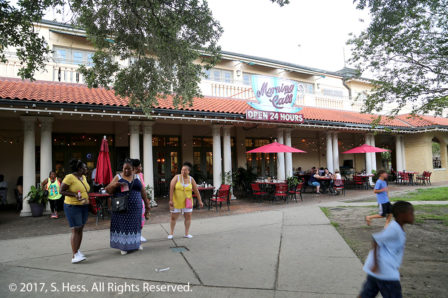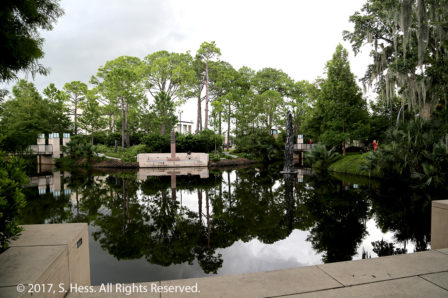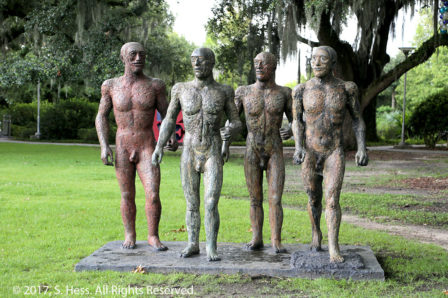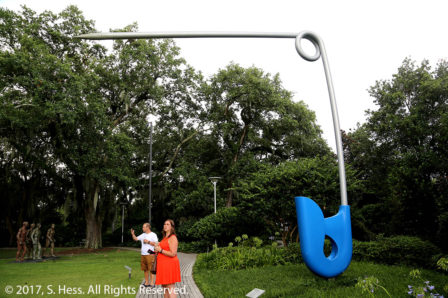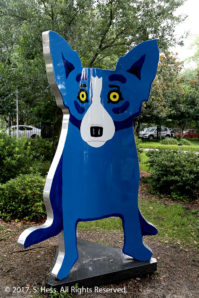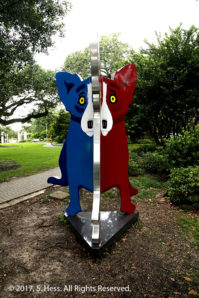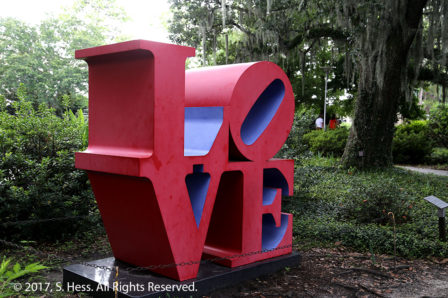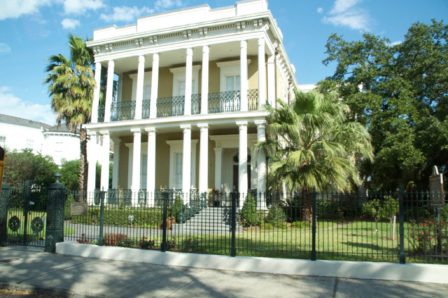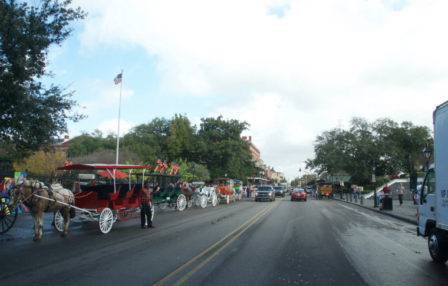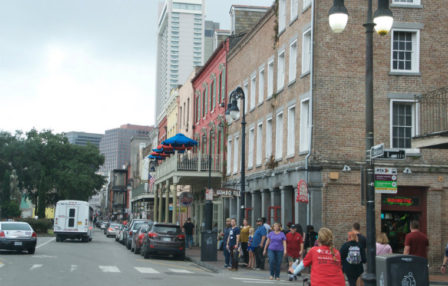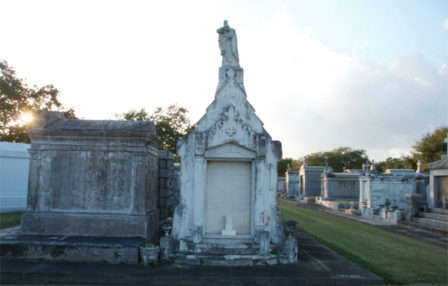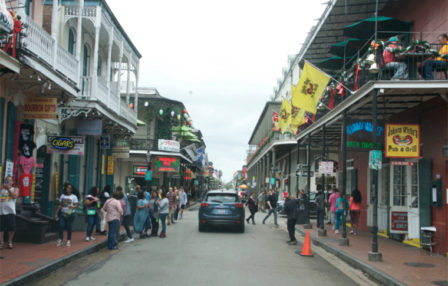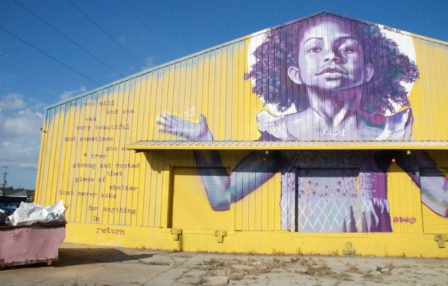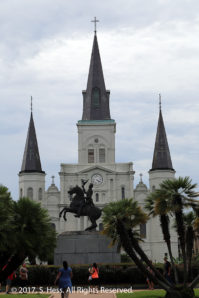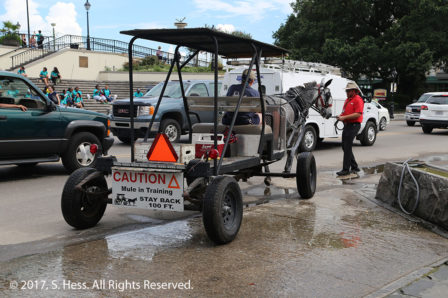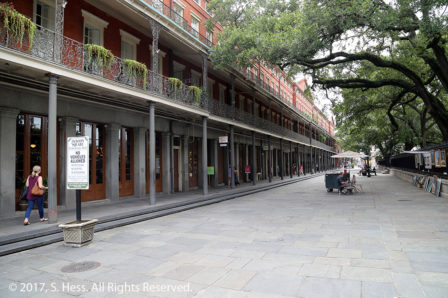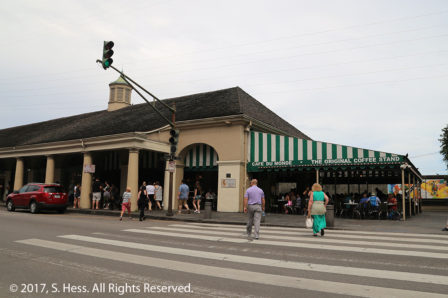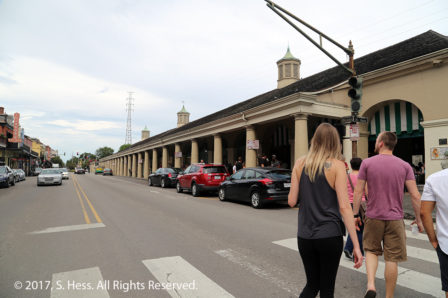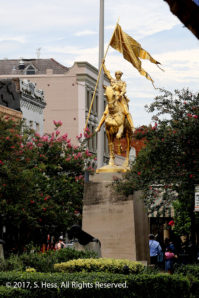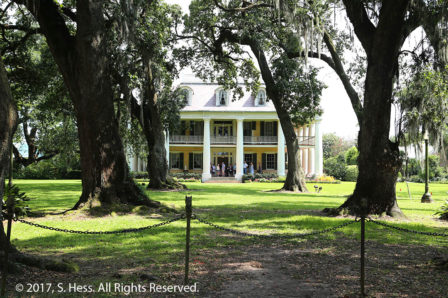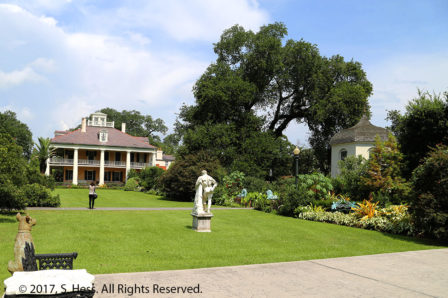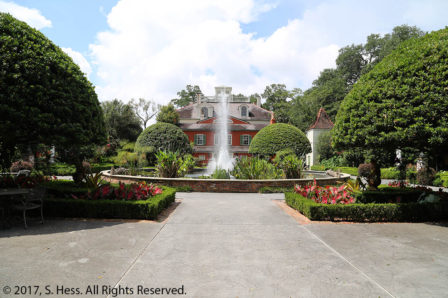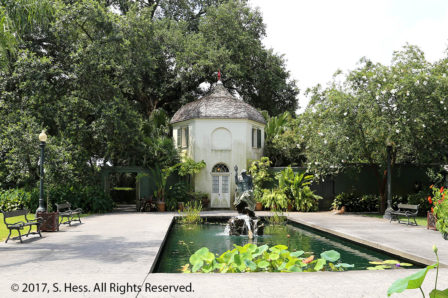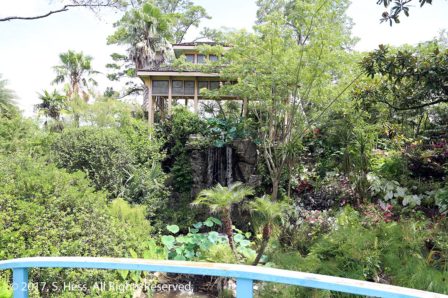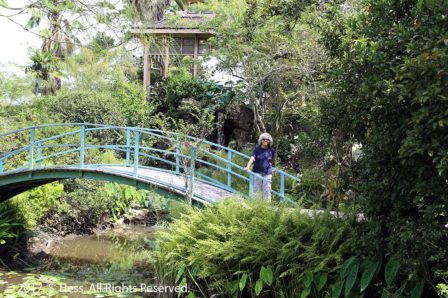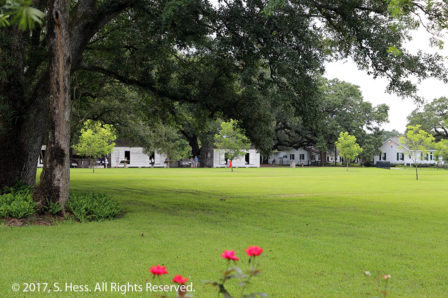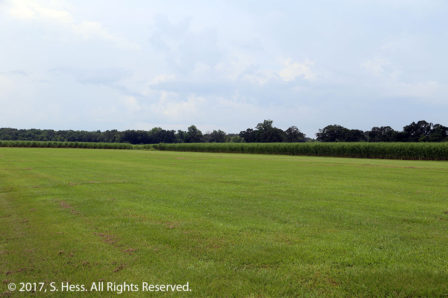We decided to continue avoiding Interstate Highways for at least another day. The plan also included a ferry ride from Dauphine Island, AL, across the entrance to Mobile Bay to Fort Morgan, AL.
We left New Orleans early because we figured that we might miss a ferry and have to wait up to 45 minutes for the next one. When we left, the sky was mostly sunny and we thought we would have a great day. We got onto US-90 in the Lower Ninth Ward of New Orleans and headed east. From the highway we could see a lot of Hurricane Katrina damage and some new housing. Ozzie, our tour guide yesterday, a Katrina survivor, theorized that many of the residents didn’t want to come back to their old homes. Many of those that were willing to come back couldn’t because they either had no proof of title or didn’t have clear title to their homes so they could not take advantage of government support to rebuild or repair.
Not long after we passed the Lower Ninth Ward, we crossed over a number of bayous. After crossing the Pearl River, which forms the boundary between Louisiana and Mississippi, the terrain started changing and we drove through thickly wooded country.
Entering Bay St. Louis, MS we started seeing our first casinos which continued until the Alabama border. In Pass Christian, MS, US-90 runs along the beaches. Around this point, the weather started changing as the clouds built up and soon brought us intermittent rain. We followed the beaches until a little east of Biloxi, with its large casinos. After US-90 crossed Biloxi Bay, we left the beaches, but could still catch a glimpse of the Gulf of Mexico.
In Grand Bay, AL we left US-90 and headed on AL-188 towards Dauphine Island. The rain became more frequent and we decided that it may not be such a pleasure to ride an open ferry across Mobile Bay. Instead of heading south on AL-193, we headed north towards I-10. Of course, the fates had some fun with us and the weather improved significantly. I-10 took us through Mobile into Florida.
We stopped at the Florida Welcome Center for a break and picked up some brochures about Pensacola. One of the brochures was about the National Naval Aviation Museum at Naval Air Station (NAS), Pensacola. We decided to visit the museum. Once again fate had a different idea! When we got to within 1/2 mile from the entrance to the Air Station, traffic came to a halt. It took us about 40 minutes to get to a point where we could see the entrance to NAS Pensacola and the traffic backed up from all directions. We made another decision and rerouted ourselves to our Pensacola hotel for the night.
Not exactly the day we planned.
